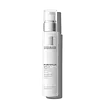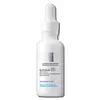What's inside
What's inside
 Key Ingredients
Key Ingredients

 Benefits
Benefits

 Concerns
Concerns

 Ingredients Side-by-side
Ingredients Side-by-side

Water
Skin ConditioningGlycerin
HumectantDimethicone
EmollientAlcohol Denat.
AntimicrobialNiacinamide
SmoothingIsopropyl Lauroyl Sarcosinate
Skin ConditioningOctyldodecanol
EmollientPEG-20 Methyl Glucose Sesquistearate
EmulsifyingDimethiconol
EmollientCetearyl Ethylhexanoate
EmollientIsohexadecane
EmollientSodium Hyaluronate
HumectantGinkgo Biloba Leaf Extract
Skin ConditioningPhenylethyl Resorcinol
AntioxidantPoloxamer 338
EmulsifyingAmmonium Polyacryloyldimethyl Taurate
Emulsion StabilisingDisodium EDTA
Isopropyl Myristate
EmollientCapryloyl Salicylic Acid
ExfoliatingXanthan Gum
EmulsifyingFerulic Acid
AntimicrobialPolysorbate 80
EmulsifyingAcrylamide/Sodium Acryloyldimethyltaurate Copolymer
Emulsion StabilisingPhenoxyethanol
PreservativeCI 77891
Cosmetic ColorantMica
Cosmetic ColorantParfum
MaskingWater, Glycerin, Dimethicone, Alcohol Denat., Niacinamide, Isopropyl Lauroyl Sarcosinate, Octyldodecanol, PEG-20 Methyl Glucose Sesquistearate, Dimethiconol, Cetearyl Ethylhexanoate, Isohexadecane, Sodium Hyaluronate, Ginkgo Biloba Leaf Extract, Phenylethyl Resorcinol, Poloxamer 338, Ammonium Polyacryloyldimethyl Taurate, Disodium EDTA, Isopropyl Myristate, Capryloyl Salicylic Acid, Xanthan Gum, Ferulic Acid, Polysorbate 80, Acrylamide/Sodium Acryloyldimethyltaurate Copolymer, Phenoxyethanol, CI 77891, Mica, Parfum
Water
Skin ConditioningAlcohol Denat.
AntimicrobialGlycolic Acid
BufferingPropylene Glycol
HumectantPotassium Hydroxide
BufferingAmmonium Polyacryloyldimethyl Taurate
Emulsion StabilisingTranexamic Acid
AstringentKojic Acid
AntioxidantC12-13 Alkyl Lactate
EmollientHydroxyethylcellulose
Emulsion StabilisingTrisodium Ethylenediamine Disuccinate
Panthenol
Skin ConditioningCapryloyl Salicylic Acid
ExfoliatingDisodium EDTA
Ingredients Explained
These ingredients are found in both products.
Ingredients higher up in an ingredient list are typically present in a larger amount.
Alcohol Denat. is an alcohol with a denaturant property. It is created by mixing ethanol with other additives.
This ingredient gets a bad rep because it is irritating and drying - mostly due to its astringent property. Astringents draw out natural oils in tissue, constricting pores and leaving your skin dried out.
However, alcohol denat. is not all that bad.
Due to its low molecular weight, alcohol denat. tends to evaporate quickly. One study on pig skin found half of applied alcohol evaporated in 10 seconds and less than 3% stayed on skin.
This also helps other ingredients become better absorbed upon application.
Studies are conflicted about whether this ingredient causes skin dehydration. One study from 2005 found adding emollients to propanol-based sanitizer decreased skin dryness and irritation. Another study found irritation only occurs if your skin is already damaged.
Small amounts of alcohol are generally tolerated by oily skin or people who live in humid environments.
The rule of thumb is if this alcohol is near the end of an ingredients list, it will probably not affect your skin much.
Also...
This ingredient has antimicrobial and solvent properties.
The antimicrobial property helps preserve products and increase their shelf life. As a solvent, it helps dissolve other ingredients.
Other types of astringent alcohols include:
Learn more about Alcohol Denat.Ammonium Polyacryloyldimethyl Taurate is a polymer made from ammonium salts. It helps add stability and texture to a product. This ingredient is stable over a wide pH range.
Due to its ability to absorb water, it can help thicken the texture of a product. As an emulsion stabilizer, this ingredient is stabilizes other ingredients to create a consistent texture.
According to a manufacturer, it helps create a "smooth, light and fresh" texture.
Learn more about Ammonium Polyacryloyldimethyl TaurateCapryloyl Salicylic Acid comes from salicylic acid, the famous acne-fighting BHA.
It usually goes by a more common name of LHA, or lipohydroxy acid.
Like salicylic acid, this ingredient is a chemical exfoliant that can help break down the oil in your pores and reduce inflammation.
Though studies for LHA do show it to be less effective than salicylic acid. To be fair, salicylic acid is the reigning monarch of acne treatments.
However, a study from 2009 found LHA to be comparable to BPO, making it a good alternative for people with sensitive skin. Another study of 14 patients found a significant decrease in comedones after using LHA.
Another pro of LHA? It is less irritating than salicylic acid due to its large molecule size.
Large molecules cannot penetrate skin as well, so they are gentler on the skin. LHA is much less penetrative than salicylic acid.
An in-vitro study (not done on a living organism) found only 6% of LHA penetrated past the statum corneum compared to 58% of salicylic acid. An in-vivo (done on a living organism) analysis revealed ~17% of LHA was still present in the top layer of skin after 4 days, versus ~9% of salicylic acid.
Interestingly, a study from 2008 found LHA comparable to another famous acid, glycolic acid.
This study found about 10% of LHA is as effective as 20-50% of glycolic acid in treating hyperpigmentation and fine-lines.
Hydroxy acids have been found to stimulate skin protein, lipids, and thermal thickening. This may have anti-aging benefits.
Learn more about Capryloyl Salicylic AcidDisodium EDTA plays a role in making products more stable by aiding other preservatives.
It is a chelating agent, meaning it neutralizes metal ions that may be found in a product.
Disodium EDTA is a salt of edetic acid and is found to be safe in cosmetic ingredients.
Learn more about Disodium EDTAWater. It's the most common cosmetic ingredient of all. You'll usually see it at the top of ingredient lists, meaning that it makes up the largest part of the product.
So why is it so popular? Water most often acts as a solvent - this means that it helps dissolve other ingredients into the formulation.
You'll also recognize water as that liquid we all need to stay alive. If you see this, drink a glass of water. Stay hydrated!
Learn more about Water